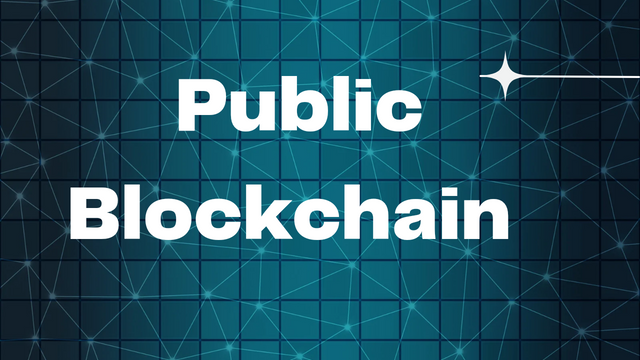Comprehensive Overview of Public Blockchains - Core Features, Challenges and Applications
At present, public blockchains are paramount to the rapidly changing digital world. This technology has made it possible to record and confirm all transactions in a transparent manner. Various industries have adopted this technology since its introduction through Bitcoin as the first and best known public blockchain, which has changed our perception about trust, ownership and data integrity. In this post I will explain the fundamentals of public block chains such as definition, advantages, disadvantages and applications.

What is a Public Blockchain?
Public blockchain is a decentralized network. People can participate in these chains by reading , writing and validating the transactions. These are open and permissionless. Anyone can join and participate in these chains. The transaction history is stored in a ledger and everyone can access to the transaction history. So it is transparent and reliable.
Core Features of Public Blockchains
Decentralization:
- They operate without any central governing body or authority, which divides control among a number of nodes enabling no one actor manipulation and hence improving security level thereby increasing reliability on transaction processing.
Transparency:
- On a public blockchain, all transactions are open to anyone with network access. This transparent nature decreases the chances of fraud and corruption.
Security:
- Public blockchains use consensus mechanisms such as proof of work or proof of stake to verify transactions and secure the network. These measures make tampering with transaction history or performing malicious acts hard for any one party.
Immutability:
- Once transactions have been entered onto a public blockchain, they cannot be modified or erased. Thus, this immutability ensures data integrity and serves as a reliable historical record.
Anonymity:
- Transactions are transparent but often pseudonymous for participants’ identities which provide some privacy while still holding them accountable.
Benefits of Public Blockchains
Trustless Environment:
- Participants do not have to trust each other or a central authority once in possession of the blockchain’s protocols plus consensus mechanisms that keep it stable and safe at all times.
Enhanced Security:
- Public blockchains are safe because they are decentralized and based on cryptographic principles, which make it impossible to hack or manipulate the system without a huge amount of computational power making attacks highly unlikely.
Increased Transparency:
- This makes every transaction visible for everyone to see and verify such data which gives an advantage especially in cases where accountability is required like financial services and supply chain management.
Reduced Costs:
- Through eliminating intermediaries and automating processes, public blockchains can reduce transaction costs while enhancing their efficiency.
Challenges of Public Blockchains

Scalability:
- When dealing with large numbers of transactions, public blockchains often have problems that come up. Security and decentralization consensus mechanisms usually slow down throughput bringing about delays in most cases.
Energy Consumption:
- Proof of work consensus mechanism requires very high energy. Because of this high consumption of energy these public blockchains are criticized.
Regulatory Uncertainty:
- The regulatory framework governing cryptocurrencies as well as public blockchain is still evolving. Businesses and individuals who use these technologies face risks and challenges due to uncertain regulations.
Privacy Concerns:
- Transactions are nevertheless visible, even if they are said to be anonymous. If transaction data is analyzed and user identities are revealed by it, privacy issues may arise.
Applications of Public Blockchains
Cryptocurrencies:
- Bitcoin and ethereum are the examples of public blockchains. These are used in the production of cryptocurrencies. We can do p2p transactions using these digital currencies without the involvement of intermediate authorities.
Supply Chain Management:
- Goods can be traced through a public blockchain, verifying product authenticity. This creates transparency that reduces fraud while ensuring quality products and trust among parties concerned.
- Decentralized Finance (DeFi):
- For instance, DeFi services such as borrowing, lending, or trading adopt public blockchains to replace traditional intermediaries who have been performing these roles in past years. In this way, financial services become accessible to masses on equal terms leading to innovation.
Digital Identity:
- Public blockchains offer secure, verifiable personal information hubs like national identity databases do; this will create better access to services as well as protection from theft of one’s identification particulars.
Voting Systems:
- Blockchain can reduce electoral fraud risk and make voting processes more transparent and secure.
Conclusion
Public blockchains are amazing because of their openness and permissionless nature. The use of this chain is cost effective. It increases the trust because of transparency. Public blockchains provide scalability to the network. Their working nature is attracting the investors. It has created safe place for the investors in the digital world.
Note:- ✅
Regards,
@theentertainer
X Permotion
https://twitter.com/shabbir_saghar/status/1792952834373165175?t=rM5pMQgjFKMuKPSsWBsJlg&s=19
Upvoted! Thank you for supporting witness @jswit.